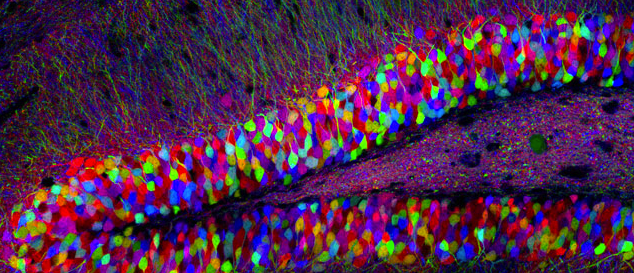A few weeks ago I visited Lauren Bon and Metabolic Studio's exhibit "The Catch" at the Hammer Museum.
 |
| The cover of the exhibit brochure |
When I pulled open the large glass doors to the exhibit and stepped inside, the doors closed behind me and it felt rather eerie. It was very dark inside and strange sounds that I wouldn't necessarily quite call music sounded like they were echoing around me. These sounds were rather peaceful, as the sound of water often can be. Once I got over my brief fear of the dark, I began exploring the room. In the center of the room was what I thought was a large white sheet, draped in intricate patterns, hanging from the ceiling.
 |
| My first view of the exhibit |
When I walked around the side of the fabric, it looked as if water was gently moving down the sheet. When I continued walking around, I saw a projector of light from the ceiling that made it look as though water was rippling down the fabric.
 |
| The projector |
Here is a video I took as I walked slowly around the exhibit in which you can both see the exhibit itself and hear the sounds I described earlier.
After finishing my lap around the center of the exhibit, I looked at the description of the exhibit that was on the wall at the entrance. From this, I learned that the exhibit was categorized as a sound piece, in which the sounds heard echoing in the room were composed of different layers of sounds. These layers include sounds from a waterwheel combined with sound samples from a plate glass factory.
 |
|
The description of the exhibit on the wall |
The intention of this work was to create an intimate experience through sound, for what is typically an otherwise large structure with important civic ideas. Being alone in the room of the exhibit made me feel as though this goal was entirely successful. While the fabric itself was physically larger than me and the sounds surrounded me, it still felt like an experience that I was a part of. I even touched "the water" of the exhibit, connecting me to the exhibit on an even deeper sensory level.
 |
| Me touching the fabric |
I continued reading about the exhibit, and found that
The Catch is actually a model of the larger scale installation that will be at Metabolic Studios. In the larger, more ambitious exhibit,
Bending the River Back into the City, a 72 foot tunnel will divert water from the Los Angeles River and lead to a waterwheel that takes the water to a garden at the top of Metabolic Studio's building. Rather than being lost in the ocean, the tunnel and waterwheel will "catch" the water that will then be used to benefit LA's landscape.
 |
| A picture of the future waterwheel from the exhibit brochure |
Bon, who originally trained as an architect, has always been interested in Los Angeles' connection to both land and water. I couldn't help but connect this to the current drought situation in LA at the moment, in which the rather drastic measure of water rationing is taking place. The current drought just makes Bon's work all the more important and necessary, to cause people to think about their impact on their environmental surroundings.
 |
| View of the rippling water |
This exhibit truly demonstrates the third culture of the combination of art and science, as Bon uses this exhibit not just for a prelude to her larger project, but as a means to get a message across about important environmental issues. While this exhibit does not apply directly to concepts discussed in lecture, as we did not discuss environmental sciences and art, it did remind me of other concepts and projects we discussed that utilize either sound or other sensory modalities to express an idea or pose a larger concern. This exhibit specifically reminded me of Joe Davis' work with audio microscopes, in which light information is translated into sound, allowing you to hear living cells. While this was not used in Bon's work, I did see a connection in that the sounds of water and of the waterwheel used in the exhibit did in a way make one feel as though the water was alive, moving and flowing with a mind of its own.
 |
| Me at the Hammer Museum |
As the exhibit is closed, I cannot encourage other students in this class to view it, however I do encourage you to follow the progress of Bon's larger work!


































